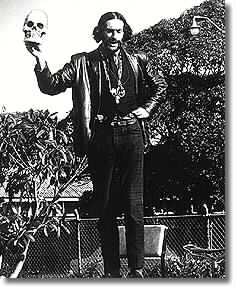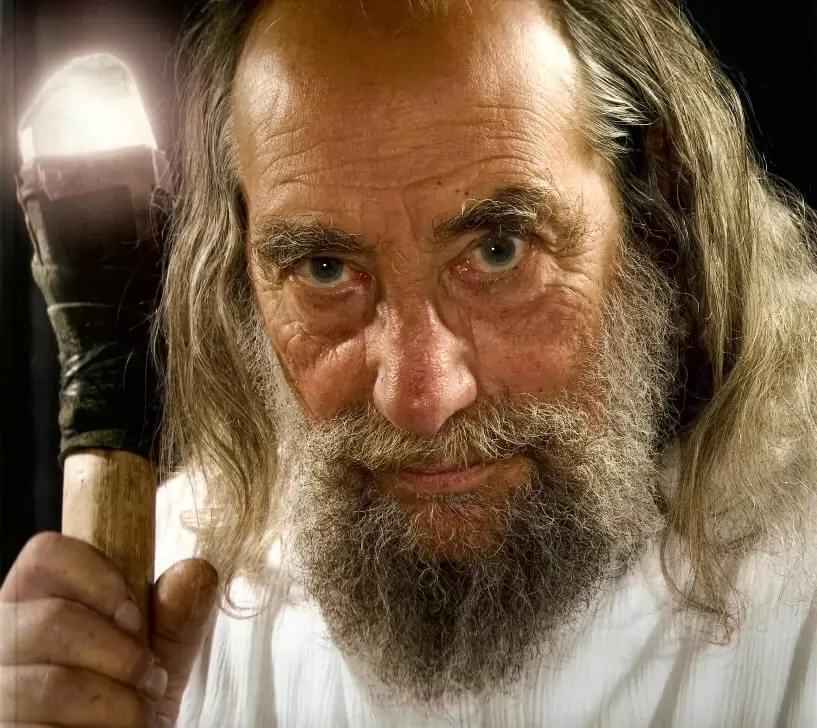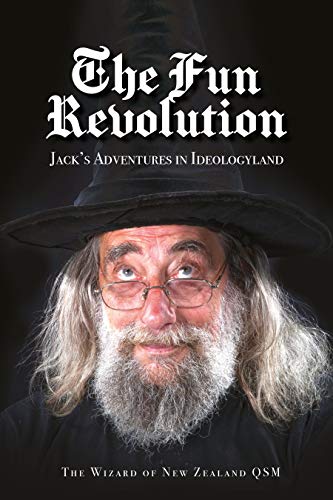A paper given at the International Humour Conference, University of NSW, Sydney, Australia, July 1996.
Humorous Origins of the Fun Revolution
It’s funny how ideas come to you quite unbidden whilst on the move. Driving from my Paddington home to my office at the University of New South Wales in the late 1960s the medieval Four Humours kept intruding on my thoughts for no apparent reason.I kept thinking about the distinctions between Melancholic, Sanguine, Choleric and Phlegmatic temperaments and their connections with the four seasons, the four elements etc., as well as types of disease.All this was taking place against a background of reading, teaching and researching which immersed me in theories of psychological, social and cultural development. So many of these theories involved four “types and/or four stages that resembled the Four Humours. The library fairy guided me to Pavlov’s final assessment of his work and to my amazement I discovered he used the Four Humours model to describe basic differences in the nervous systems of the dogs he had experimented on!Teaching classes in the sociology of religion made me aware that a lot of magical typology is based on the oppositions of an active-passive dimension and an inner-outer dimension. This system gives rise to four groupings rather like the Four Humour typology. I was hooked! The humorous Snark Hunt was on.
The sociologists Talcott-Parsons, Max Weber and David Riesman, the psychologists Maslow, Jung and (with modification)Freud, together with grand theories of historical development from Joachim of Floris to Vico, Marx and Sorokin, were all grist to my humorous analytical mill.
See Wizard’s Glyph
As can only be expected from an intellectual with a grand theory, I got carried away. By 1973, after five years of investigation, during which time I plundered theories of ethology, neurophysiology, biology, subatomic and molecular physics, I had created a complete cosmology! I derived the interactive relationship between the schema of “observable” phenomena, (kinematics or extension) and “deduced” noumena, (dynamics or intention) from the existentialist concept of time as eventuality (time as the probability of an event occurring).
See Tree of Life
I think that’s quite enough intellectual ego tripping. Even I don’t know if my new cosmology is a work of genius or muddle-headed nonsense. The point I want to make is that in the late 1960s and early 1970s my nervous system, unlike those of many of my contemporaries, was not in need of stimulation through sex, drugs, rock-and-roll, or even millenarian political or religious activism. It was too late anyway, Marshall McLuhan, the “electronic prophet” had already blown my mind by the time the Dionysian sixties exploded on the Australian campuses.
A profound sense of the absurd is an important prerequisite for humour to be created and appreciated. When an historical period is being rendered meaningless by a new zeitgeist, responses generally vary from shock and retreatism to compulsive conformity or to eschatological hopes for divine intervention or revolution.
However some people feel a delirious sense of relief and detachment as the sacred cows are desecrated. I think McLuhan experienced this, certainly his writings about the post-literate, post-industrial age are full of outrageous word play and bizarre examples that are “disgraceful” for an academic of his distinction.
To demonstrate the use of the four humours as an analytical tool one could say that, under these conditions of anomie, phlegmatics retreat into private life and traditional values, cholerics get angry and rush about urging people to believe in the coming revolutionary overthrow of the present Evil System by “God” or “The People”, melancholics lose themselves through compulsive conformity with peer group fashions in drugs, music, religion, clothes, sex etc. and sanguine types treat the world as an absurd joke.
From the deep, far-reaching humour of Jonathan Swift and Lawrence Sterne to Lewis Carroll and Samuel Butler the English people in particular have been well prepared for the explosion of humour that has occurred contemporaneously with the almost unparalleled combination of stupidity, hypocrisy, violence and brutality of the present century. From Itma to The Goon Showand Hitch Hiker’s Guide to the Galaxy on radio, and from The Goodies to Monty Python on television and film, English humour in the second half of the twentieth century reached a level of excellence unequalled in world history. The only example of an equally profound and relevant sense of humour at any other time or place (that I can think of) are the plays of Aristophanes, who also felt that his own civilization had become absurd.
A good recent example of the role of this sort of humour is the news story that as the HMS Sheffield (a flammable-aluminium battleship) was sinking in icy water near the Falklands, the sailors on the burning deck were singing “Always Look on The Bright Side of Life” from that comic masterpiece “The Life of Brian”. Earlier in the century “Old Bill”, of newspaper cartoon fame, advised soldiers complaining about the horrors of living in flooded shell holes during the First World War “If you know a better ‘ole, go to it”..
My favourite, which really inspired me at this eventful time, was the Czech reaction to the Warsaw Pact invasion of their own communist state. The official newspaper of the Czech Communist Party, Rude Pravo, in its editorial during the invasion, welcomed in “the glorious Russians and their allies”. The editorial was signed Joseph Schweik! The Czech peoples’ response as a whole was “sanguine”, not choleric, melancholic or phlegmatic. There were countless incidents of detached and ironic “counter-revolutionary” activities and jokes, all at the Russians’ expense. Most important of all, the huge Czech army kept their heads and didn’t even attempt to fight back. Of all the peoples of Europe the Czechs are the only ones with a sense of humour as deep as the English. It was an absurd situation and they responded accordingly.
In 1968 I felt the same way about the student “revolution”. Students living under socialist regimes really were oppressed and faced death or imprisonment for mere criticism of their governments, let alone any public demonstrations.
Students in Australia and their role- models, American and Western European students, were spoiled rotten with government grants and well-equipped campuses. They could say almost anything they liked about their governments and on completion of their degrees they were sure of well-paid jobs. Yet, as in the United States, urged on by some well-paid, tenured academics, students were rising up to protest violently against their conditions. Protesters came from both The New Left and The Old Left (Stalinists, Trotskyites, Maoists, “fans” of Che Guevarra and Ho Chi Minh etc).
Conscription for Vietnam was a popular base for discontent in the USA and Australia but was not needed as an excuse by student activists in the U.K., Western Europe, Asia, South America or Africa.
Ten years before I had been attracted by the New Left in the UK with its attempt to dump the ideological claptrap, rigid bureaucratic organisation and emphasis on violent revolution of the Old Left but now when it was time for action they couldn’t stop the Old Left from bulldozing right over their more thoughtful and gentle approaches to social reform. Early in 1968 I felt strongly that an entirely new approach to radical action for reform was long overdue.
The Fun Revolution Breaks Out
Before any other student movement could get off the ground in Australia I organised a series of meetings of students and staff at the University of NSW on the theme “Student Power and Responsibility” and founded the Blackguards, a discussion group to whom I introduced new ideas from Marcuse and McLuhan, and some older but relevant ideas from Riesman and Fromm.
Then, together with a small number of supporters drawn from student, academic and even administration ranks, we formed a strange combination of “think tank” and “direct activists”. We named our carefully “disorganised” group ALF. The acronym had many interpretations (“resonating in acoustic space” as McLuhan puts it) the one we preferred at the time was Action For Love and Freedom, thereby combining the current “hippie” movement for peace and love with the direct action of the revolutionaries.
The success of Alf in “revitalising” the complacent and dull university bureaucracy, achieving reforms in participatory democracy and giving students some spectacular entertainment was quite remarkable and due a lot to the support (after some prodding) of Sir Philip Baxter, the Vice Chancellor at the time, his popular and playful successor Professor Rupert Myers, a number of progressive academics and the Student Union leaders. Members of Alf worked closely with all groups on campus as part of their principles of action for love and freedom, and always bore in mind the ideal of a “community of scholars”.
Once they got themselves moving we became the hated target of the Old Left radicals who had hundreds of bureaucratically organised members, bikies as allies, and considerable funds from off campus. Their attempts to dismiss us as fools who were “distracting people from the real issues” were countered by our carefully reasoned arguments (which they didn’t want to hear) but also by our experiments in guerrilla warfare of the mind tactics which were more successful. Amidst roars of laughter every time they attacked us in front of the students we would trick them into revealing themselves as violent, puritanical dinosaurs who hated fun. The Czech lesson was well learned.
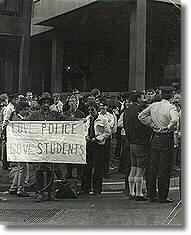
THE FUN REVOLUTION.
My aim was to turn the entire University of NSW into a theatre of the absurd, as I said at the time, to “blow the university up with funpowder”. The events of this period cannot all be related here but they included packed “happening” Roundhouse Meetings of students, academics and administrators all participating vigorously; on one occasion speakers alternated with a rock band. Fun Demonstrations in Sydney centre, and towards the end of the year, a sit-in which led to the VC building an “Alf House” on campus.
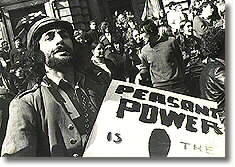
At the same time my Head of Department, who was also my inactive and irresponsible Ph.D. thesis supervisor, found an excuse (insufficient progress) to terminate my thesis without any consultation, and to dismiss me. Whenever asked about me later he would simply state that I was insane. Incidentally I have never consulted a psychotherapist and at this time was regarded by the professionals that I knew in this field as a talented “natural” in community therapy and psychodrama. One or two were involved with me in putting on extra-mural “happenings” in parks!
At this nadir in my fortunes the VC, some well-wishers, and the Student Union came to my rescue. To what must have been the shock of the Australian University Vice Chancellors Association, Sir Philip Baxter, with the support of the Student Union (one vote against), appointed me official Wizard of The University of New South Wales.
A Wizard Leads the Fun Revolution
In 1969 as University Wizard I was well placed to continue my theatre of the absurd experiments. I will describe a few that should interest academics studying humour.
“Have Your Worst Suspicions Confirmed”
A paranoid, schizophrenic psychodrama where I attacked myself in front of bewildered students. This took place the day before the Students Union was to vote on the Vice Chancellor’s proposal that I be appointed University Wizard. The suspicious and puritanical Old Left had mobilised a campaign to stop the appointment which they claimed was a cunning plot by the VC to control the student masses. Alternatively the roles of suspicious intellectual sociologist and fun-revolutionary Wizard I was both opposer and defender of the proposition. I also provided the students with a form to fill in which was as absurd as the rumours about the appointment.
The Investiture of Sir Rupert Myers
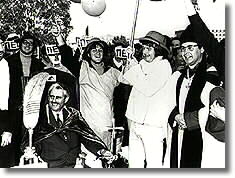
Tarring and Feathering;
Another piece of theatre, arranged, like the paranoid psychodrama to outflank the gathering campaign of opposition from the serious Old Left.
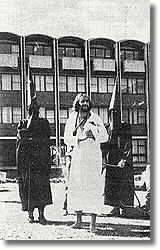
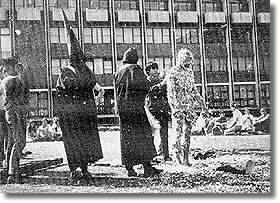
“At Last The 1848 Student Power Show”; an ambitious piece of psychotherapy and living theatre combined, was held in the Roundhouse one evening in July. It starred the VC as The VC, the Student President as The Student President and so on, even including one of the more notorious Old Left heavies from Sydney University as himself. I played the part of an academic transformed by magic into a Wizard.
As students entered they were given stickers to wear and allocated seats in active political groups, SDS, CND, Socialists, Labour, Liberal, Trotskyite, Maoist, Engineering Students etc. They were controlled by student power “leaders” who gave them cues when to cheer or boo during the first part, which was a kind of participatory enactment of escalating anger at UNSW. This built up to a violent culmination suddenly interrupted by the transformation of an academic into a wizard who then cast a spell of reconciliation. The second part was a “psychedelic” interlude with special lighting effects and slow rhythmic dancing. The finale was “eating God, the feared father”; a huge plastic figure containing sweets descended from the high ceiling and was torn to pieces and devoured by the audience.
The Dictatorship;
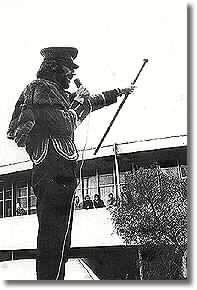
At a Special General Meeting of the Student Union held to deal with the crisis I proposed that I be elected “Dictator of the Students Union” and charged with sorting things out. The Old Left went berserk, but considering their own recent dictatorial behaviour, the more they opposed the motion the more the students supported it.
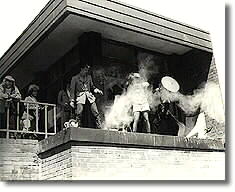
For the record I regarded Beck’s “Living Theatre,” hugely popular in the USA and London at the time, as even more elitist, unimaginative and depressing. “Alf’s Living Theatre is CRAP” was the title of one of my articles in Tharunka that year (CRAP was Cultural Revolution Against Puritanism).
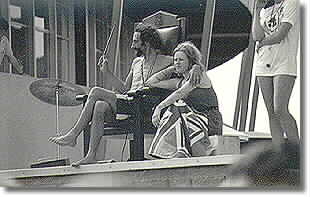
On the last day of term “the power went to my head” and I rebelled against the VC. himself. With my own band playing the march from Aida I led a mob of students up to the top campus (where Max Merritt and the Meteors were performing). Then, standing outside the Chancellery, I shouted out that the real tyrant was the VC and that he should quit so that I could take over.
Rupert Myers appeared on the balcony and ordered me to report to him. I marched angrily in and joined him on the balcony. Then to everyone’s amazement he tied me up with red tape and opened his jacket to reveal that he was wearing a Dictatorship T Shirt! My loyal “henchmen”, who backed me during the rallies, then betrayed me to a man, crying out (with many students joining in) “Hail Rupert!”
Alas I do not have time to go into more detail nor to describe subsequent episodes of the Fun Revolution at UNSW in 1970, and at other Universities in Australia during the next four years.
The Fun Revolution Gallery
